What are the core skills?
Core skills are fundamental to a player’s ability to perform well and impact games. They can include on the ball and off the ball actions and relate to both in and out of possession technical skills.
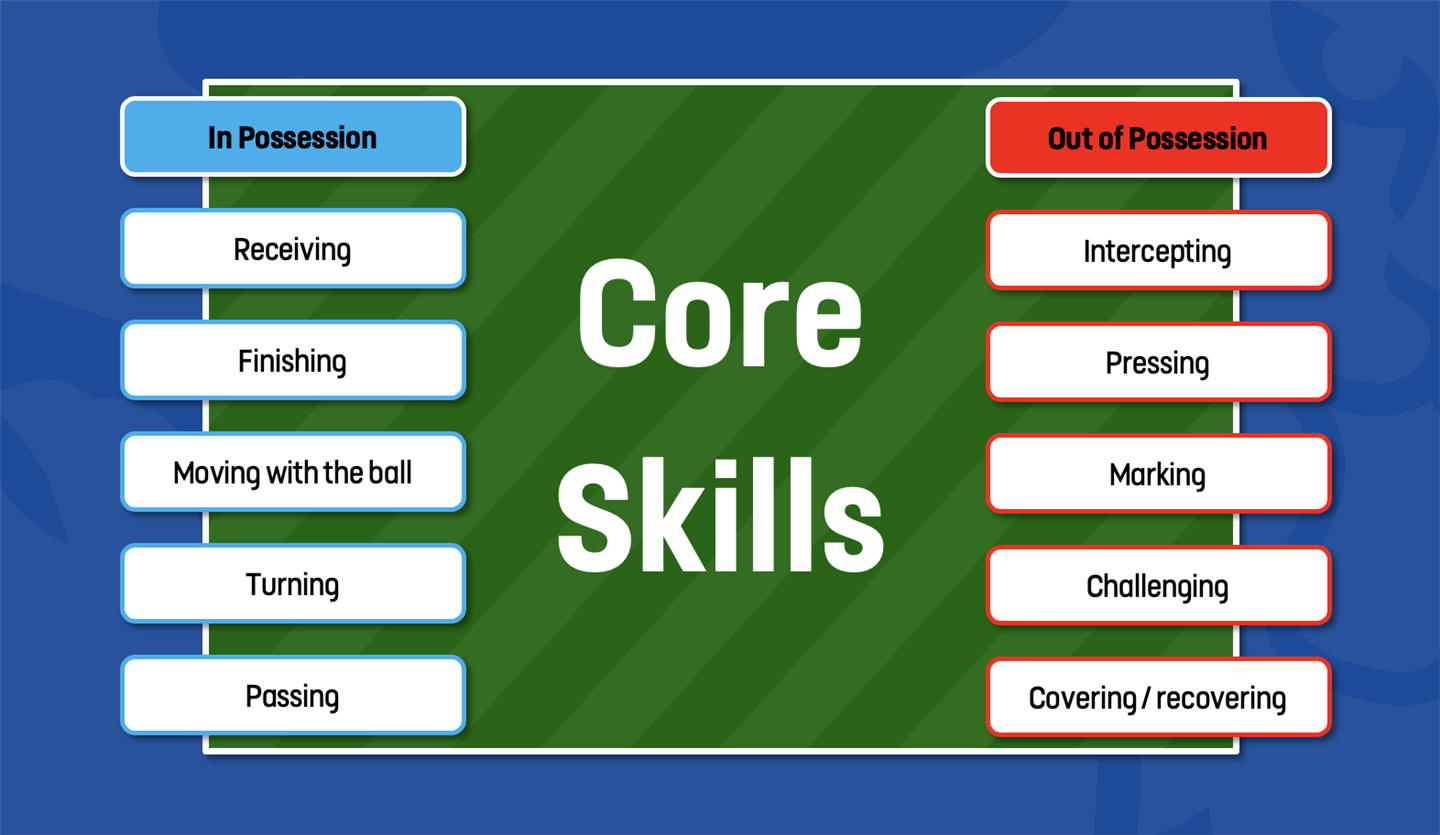
These core skills might look very different based on the positional roles and responsibilities players are given on a matchday. Within this blog, we’ll take a closer look into how the core skill of passing might vary for across different positions on the pitch. We’ll use senior male game insights but regardless of who you’re coaching, think about the positions your players play in and how this may present different challenges and opportunities when it comes to passing.
Passing in the Premier League
We’ve looked at three central outfield positions and analysis of the Premier League this season shows that centre backs pass the ball on average nearly four times more than centre forwards over 90 minutes. Of course these passes will look different, but nowadays at the top level, it’s defenders dictating the play and using passing skills more frequently, often with higher levels of risk with each pass.
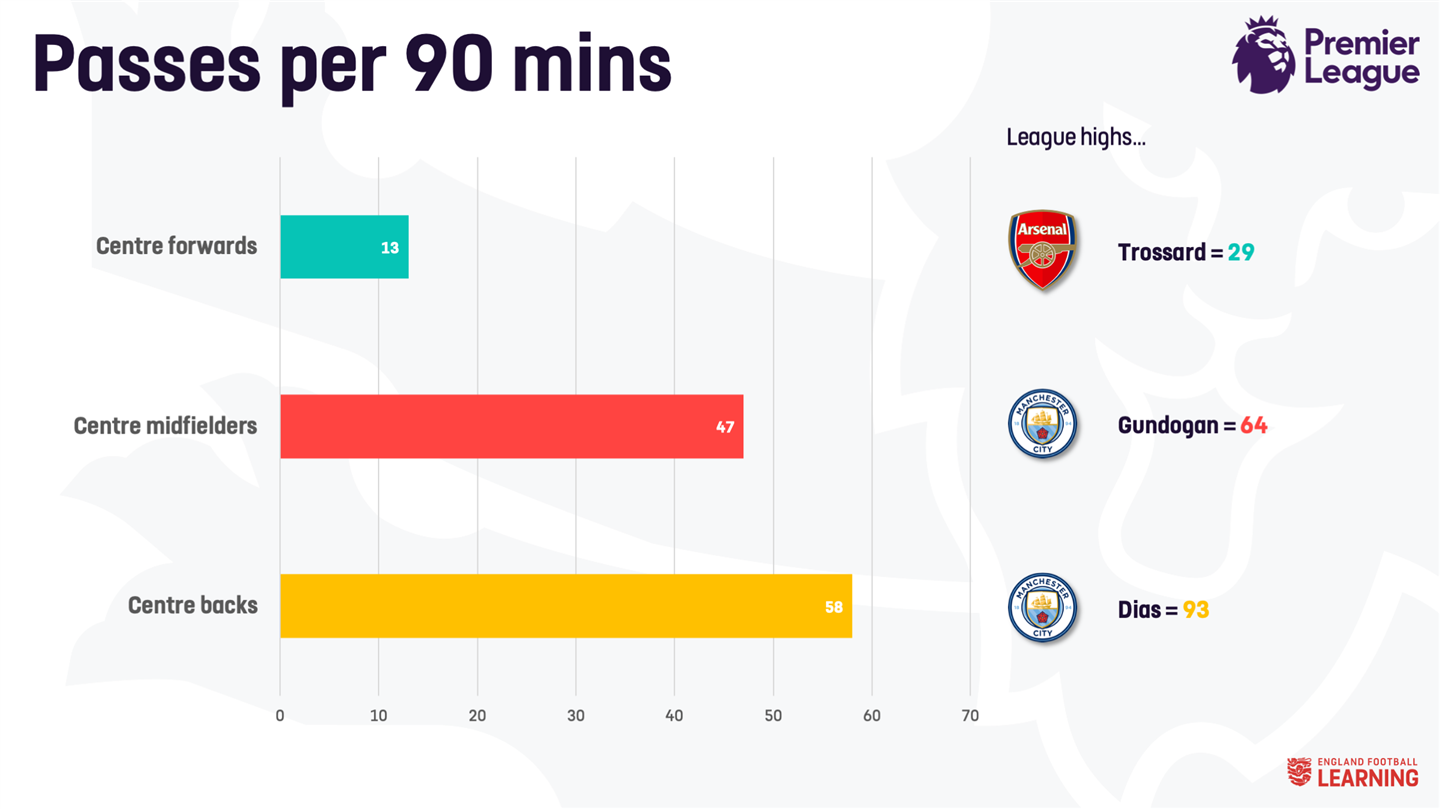
However, when we begin to dig a little deeper into the data (see graphic below), we can see that centre backs also make longer passes on average than centre midfielders and centre forwards.
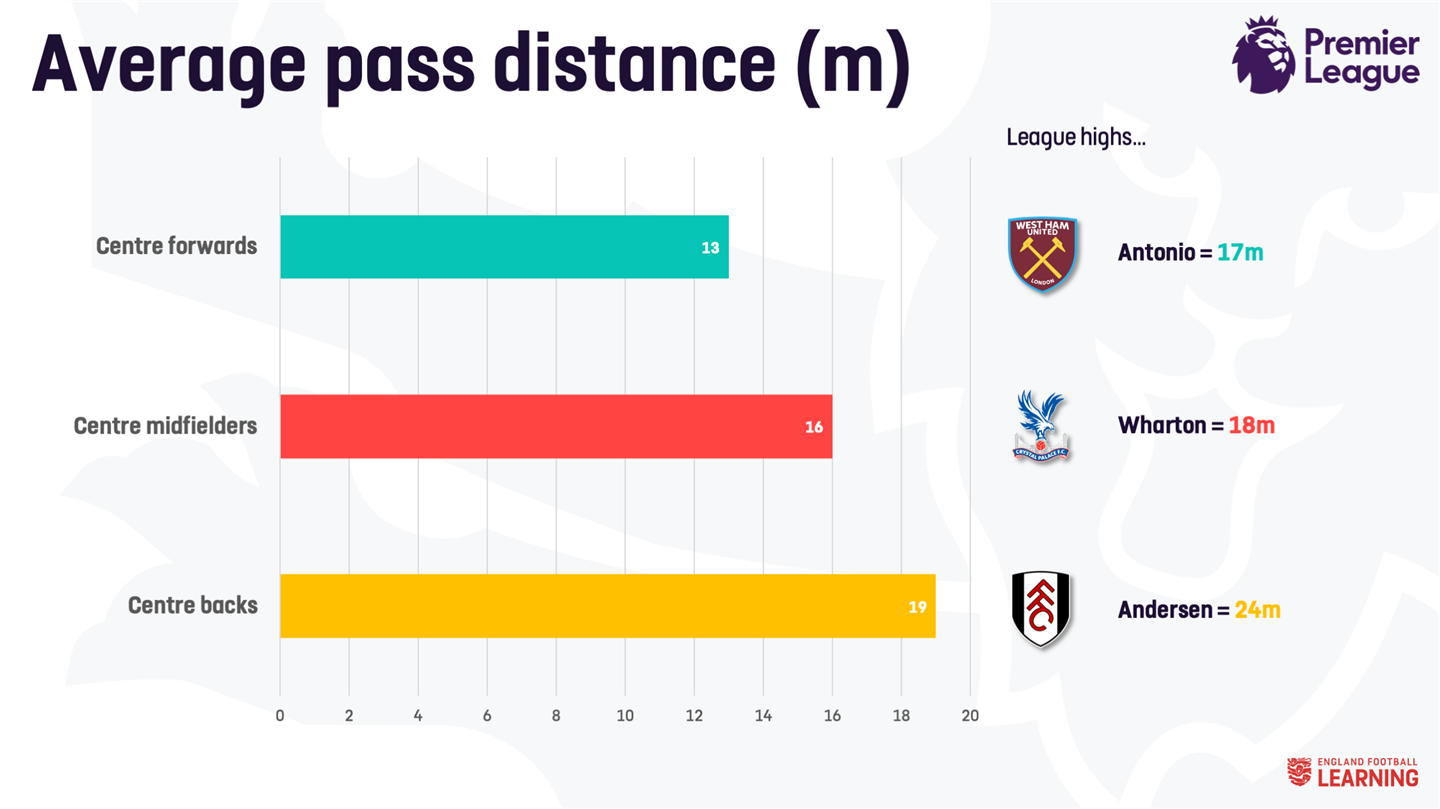
The higher up the pitch that players are operating, the less opportunities to play over longer distances there are. Imagine the types of scenario that require a longer pass and much of these will come from deeper areas to exploit space in behind an oppositions defence or to switch the play around an opponent’s shape.
Let’s add some context around how often passes are made ‘under pressure’ and provide a little more insight into positional requirements and passing. The graphic below shows that despite centre forwards playing less passes than their teammates further down the pitch, the passes they do play are often under pressure. Trying to find a teammate when are defenders trying to block your pass, or dispossess you requires quick thinking and sharp senses. Centre forwards often operate in tight spaces and have little margin for error when trying to create effective goal scoring opportunities.
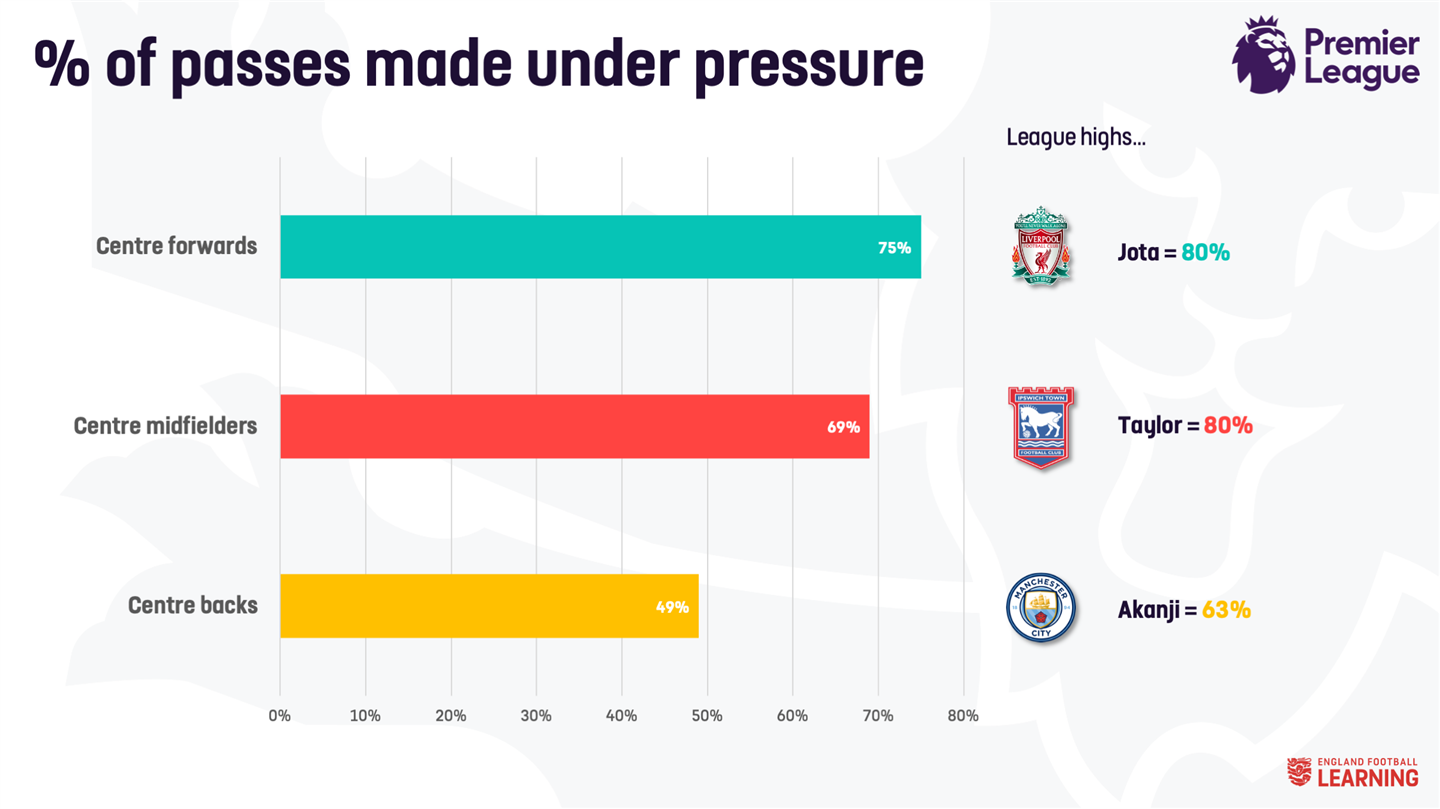
This data shows that positional differences provide different challenges when it comes to passing the ball. When we look at the players with the highest numbers in the league, we begin to see how individual player profiles and team styles will have a major effect on the conditions a player might receive the ball in.
When it comes to the percentage of passes under pressure in the Premier League, Diogo Jota at Liverpool is the highest centre forward Jack Taylor at Ipswich is the highest centre midfielder, and Manuel Akanji is the highest centre back. The graphics below show these three players’ passing flow on the pitch, in terms of number of passes and direction. Playing style and team tactics can offer some explanation as to why these three players are the highest in their position for passing under pressure, but the comparisons across the three pitch graphics tell three very different stories.

What affects whether a pass is played under pressure? It could be the quality of a players receiving skills to allow enough time to play the right pass, where the player is operating and whether they are looking to draw some pressure on themselves before exploiting space.
Breaking passing down
The before, during, after model can be used for any of the core skills and closely ties in with the six player capabilities (pictured within the graphic below).
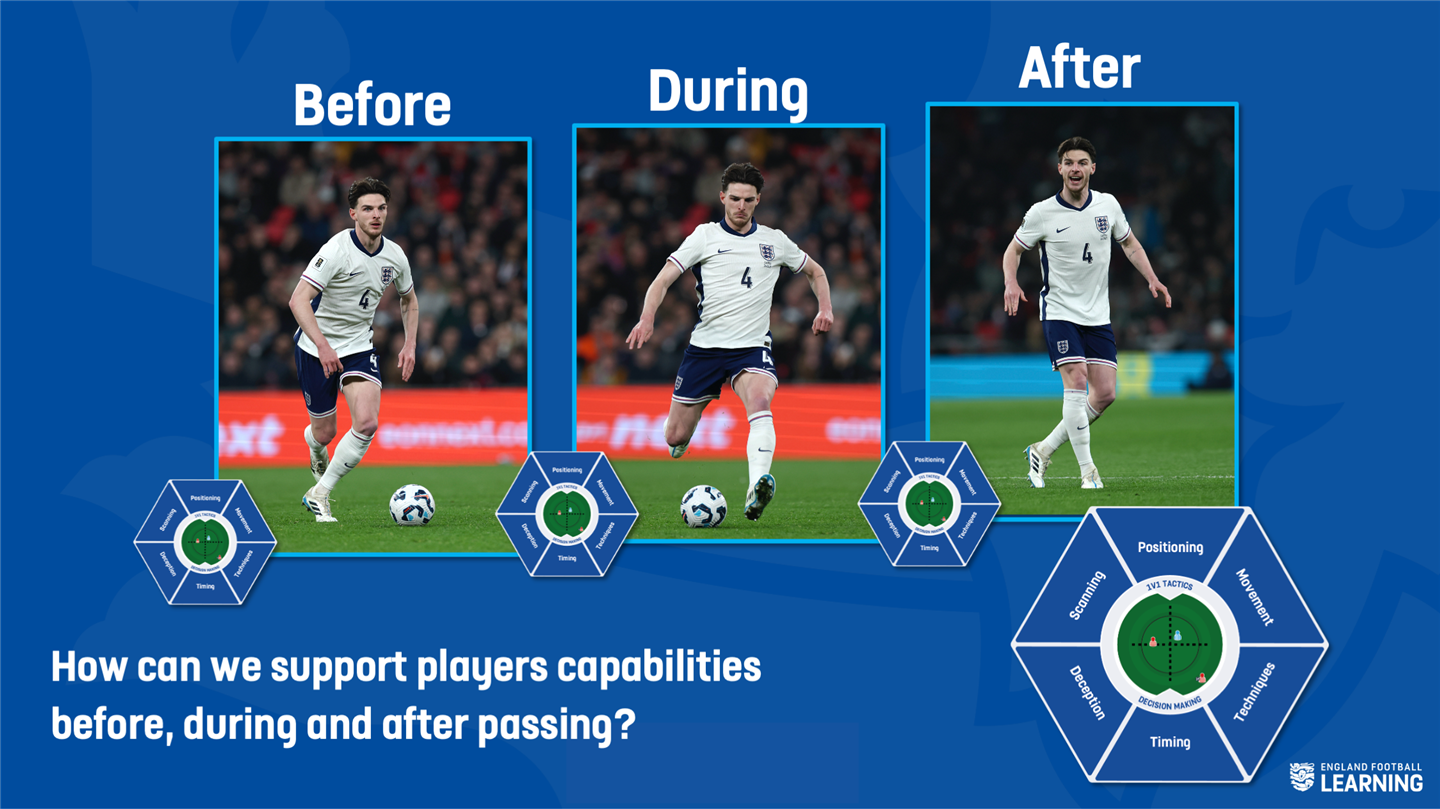
All six player capabilities are important at each stage of receiving. Below are some key considerations for each stage…
- Before passing the ball, scanning and positioning are important to assess where teammates and opponents are and to be in good areas to receive.
- During the skill of passing, players will use technique, timing and deception to effectively penetrate opponents or retain possession for their team.
- After passing the ball, effective movement can be key to support team mates with an option to receive the ball again.
Watch the videos below for examples of how to observe passing before, during and after.
Passing techniques over shorter distances
Passing techniques over longer distances
Coaching considerations
How do the positions players are playing in dictate how they might commonly pass the ball?
How do the specific roles and responsibilities of those positions influence types of passing?
How might you vary a players positional experiences to afford them different opportunities to pass the ball?

